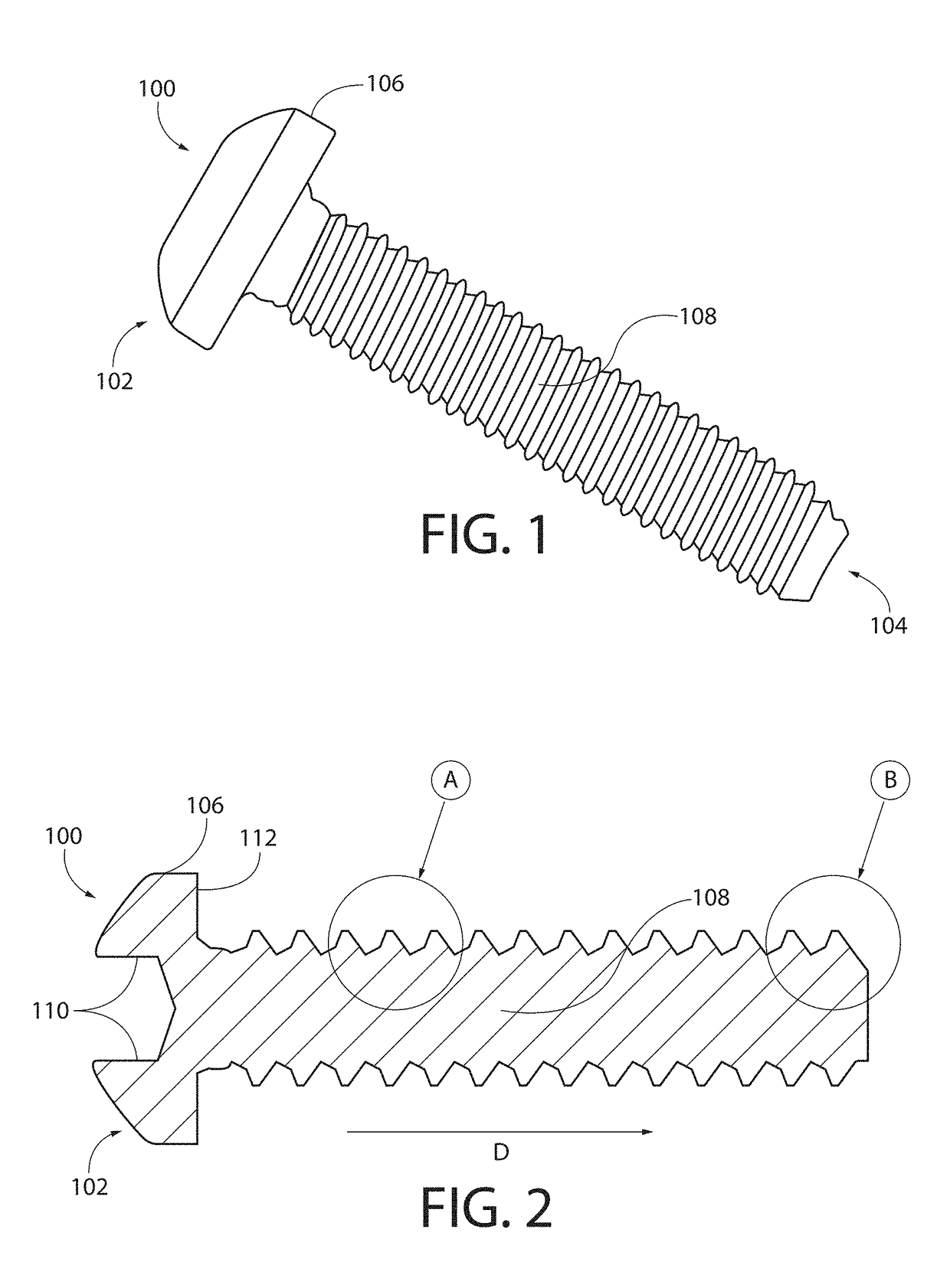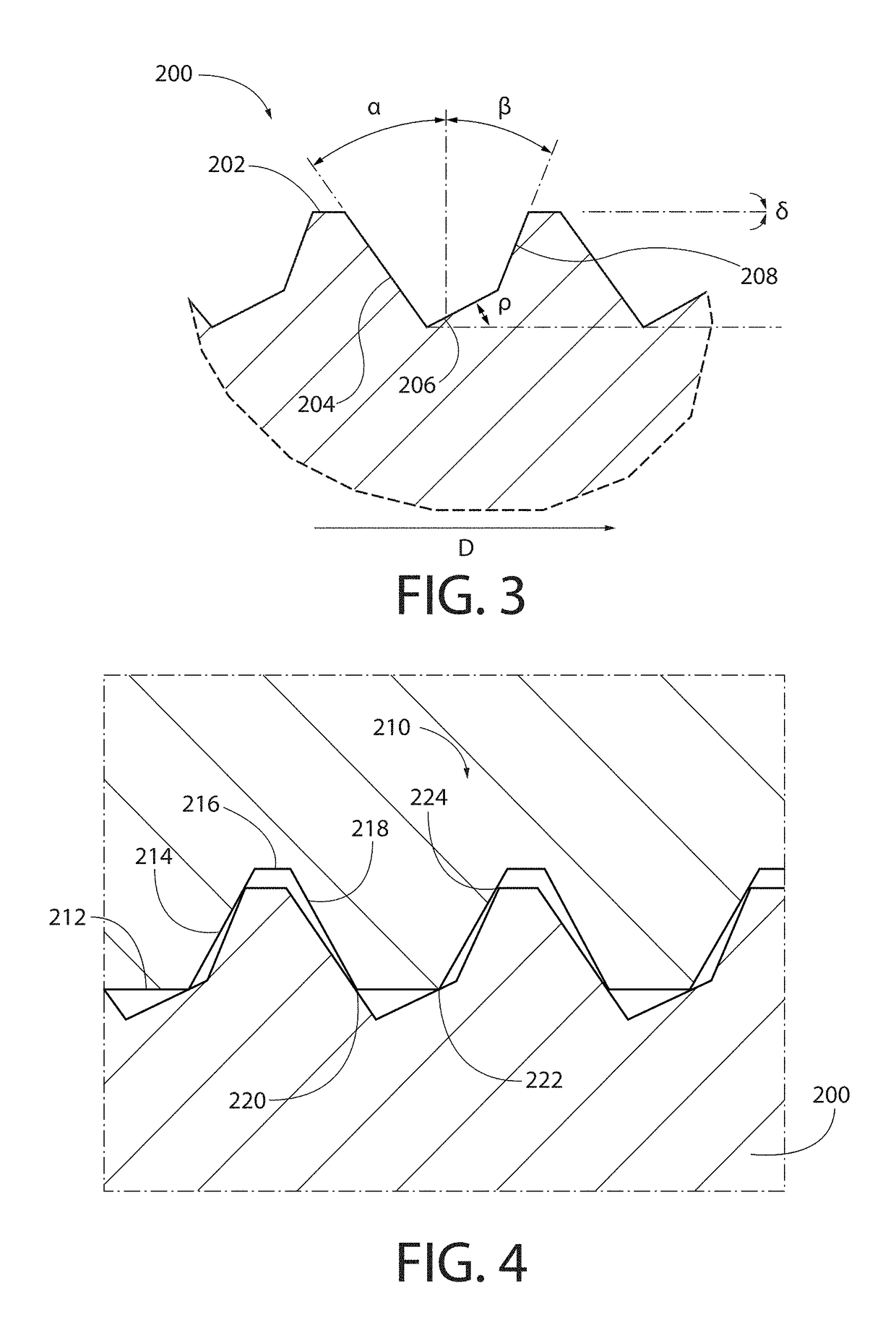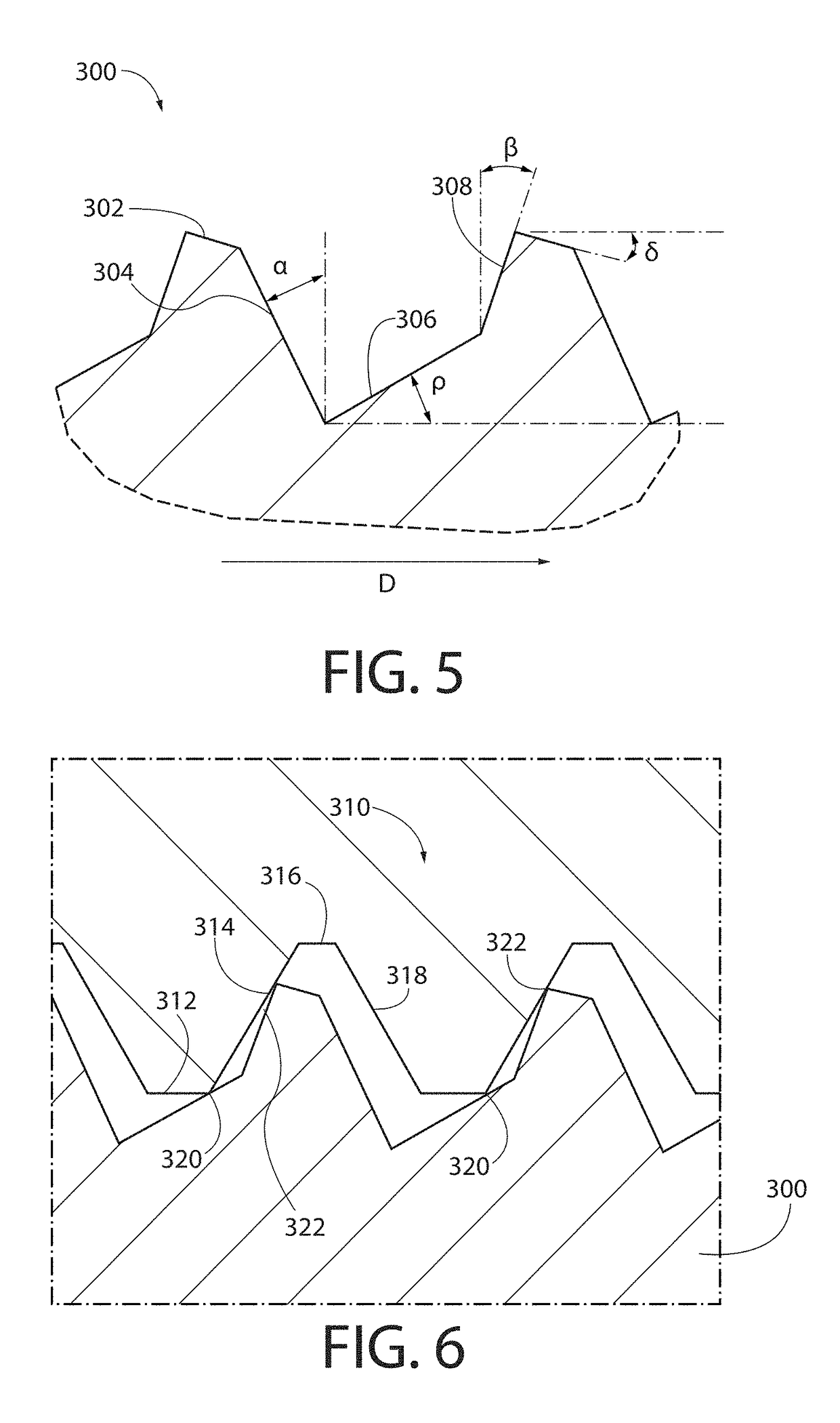Threaded fastener
a threaded fastener and thread technology, applied in the direction of threaded fasteners, fastening means, screws, etc., can solve the problems of premature assembly failure, vibration-induced loosening, clamping and premature assembly failure, etc., to improve the vibration resistance of threaded fasteners
- Summary
- Abstract
- Description
- Claims
- Application Information
AI Technical Summary
Benefits of technology
Problems solved by technology
Method used
Image
Examples
first embodiment
[0033]Referring now to FIGS. 3-4, a thread 200 of a threaded fastener is illustrated. The crest portion 202 oriented at a crest angle δ of approximately −5° to 5° relative to the longitudinal axis of the fastener. The crest angle δ may also be approximately 0°. The leading flank 204 is oriented at a lead angle α of approximately 25° to 45° relative to the normal axis of the fastener. The lead angle α may also range from 30° to 40°, 32° to 38°, 34° to 36°, or is approximately 35°. The root portion 206 is oriented at a root angle ρ of approximately 17° to 37° relative to the longitudinal axis of the fastener. The root angle ρ may also range from 20° to 34°, 22° to 32°, 24° to 30°, 26° to 28°, or is approximately 27°. The trailing flank 208 is oriented at trail angle β of approximately 12° to 32° relative to the normal axis. The trail angle β may also range from 14° to 30°, 16° to 28°, 18° to 26°, 20° to 24°, or is approximately 22°.
[0034]Referring to FIG. 4, the thread 200 provides th...
second embodiment
[0037]Referring now to FIGS. 5-6, a thread 300 of a threaded fastener is illustrated. The crest portion 302 oriented at a crest angle δ of approximately 5° to 25° relative to the longitudinal axis of the fastener. The crest angle δ may also range from 7° to 23°, 9° to 21°, 11° to 19°, 13° to 17°, or approximately 15°. The leading flank 304 is oriented at a lead angle α of approximately 15° to 35° relative to the normal axis of the fastener. The lead angle α may also range from 17° to 32°, 19° to 30°, 21° to 28°, 23° to 26°, or may be approximately 25°. The root portion 306 is oriented at a root angle ρ of approximately 20° to 40° relative to the longitudinal axis of the fastener. The root angle ρ may also range from 22° to 38°, 24° to 36°, 26° to 34°, 28° to 32°, or may be approximately 30°. The trailing flank 308 is oriented at trail angle β of approximately 10° to 30° relative to the normal axis. The trail angle β may also range from 12° to 28°, 14° to 26°, 16° to 24°, 18° to 22°,...
third embodiment
[0041]Referring now to FIGS. 7-8, a thread 400 of a threaded fastener is illustrated. The crest portion 402 oriented at a crest angle δ of approximately −5° to 5° relative to the longitudinal axis of the fastener. The crest angle δ may also be approximately 0°. The leading flank 404 is oriented at a lead angle α of approximately 20° to 40° relative to the normal axis of the fastener. The lead angle α may also range from 22° to 38°, 24° to 36°, 26° to 34°, 28° to 32°, or approximately 30°. The root portion of the thread 400 includes a first root portion 406 and a second root portion 407. The first root portion 406 is oriented at a first root angle ρ1 of approximately 0° relative to the longitudinal axis of the fastener. The second root portion 407 is oriented at a second root angle ρ2 of approximately 30° to 50° relative to the longitudinal axis of the fastener. The second root angle ρ2 may also range from 32° to 48°, 34° to 46°, 36° to 44°, 38° to 42°, or approximately 40°. The trai...
PUM
 Login to View More
Login to View More Abstract
Description
Claims
Application Information
 Login to View More
Login to View More - R&D
- Intellectual Property
- Life Sciences
- Materials
- Tech Scout
- Unparalleled Data Quality
- Higher Quality Content
- 60% Fewer Hallucinations
Browse by: Latest US Patents, China's latest patents, Technical Efficacy Thesaurus, Application Domain, Technology Topic, Popular Technical Reports.
© 2025 PatSnap. All rights reserved.Legal|Privacy policy|Modern Slavery Act Transparency Statement|Sitemap|About US| Contact US: help@patsnap.com



